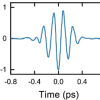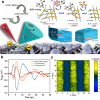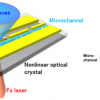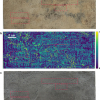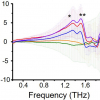
The FLUTE facility at Karlsruhe Institute of Technology (KIT) (this abbreviation is derived from its German name: Ferninfrarot Linac- und Test-Experiment) is a development platform for accelerator physics studies. It will serve as a test facility for methods that allow, in a first step, the better understanding, measurement and control of the complex dynamics of ultra-short electron bunches. Only very compact electron bunches can generate intensive, brilliant and coherent terahertz radiation. The special challenge faced when designing accelerators such as FLUTE is to keep the electron cloud so compact during the acceleration process that its expansion is smaller than the wavelength of the generated electromagnetic radiation. Only then, the waves overlap each other, forming pulses of high intensity with a duration of picoseconds or femtoseconds.
In the long run, control of the electron bunches must be improved in such a way that the terahertz radiation can be adapted perfectly to the intended application. Terahertz radiation could open up new domains of application for which the neighbouring visible light and radio waves are unsuitable. As a research infrastructure, FLUTE will also be used for the development of terahertz radiation measuring methods that can be employed in materials and life sciences. Protein oscillations can be examined just as well as the behaviour of superconductors or novel semiconductors.
Within the FLUTE accelerator, whose length is approximately 12 m, the electrons are accelerated to reach an energy of up to 50 MeV. The electron cloud is compressed to a few µm so that radiation with a frequency of 30 THz or more can be generated. Besides the Institute for Beam Physics and Technology at KIT, development partners from all over Europe, above all the Swiss Paul Scherrer Institute (PSI), are participating in the FLUTE project.
The potential for THz generation from FLUTE is described in a paper in Rev. Sci. Instrum.




